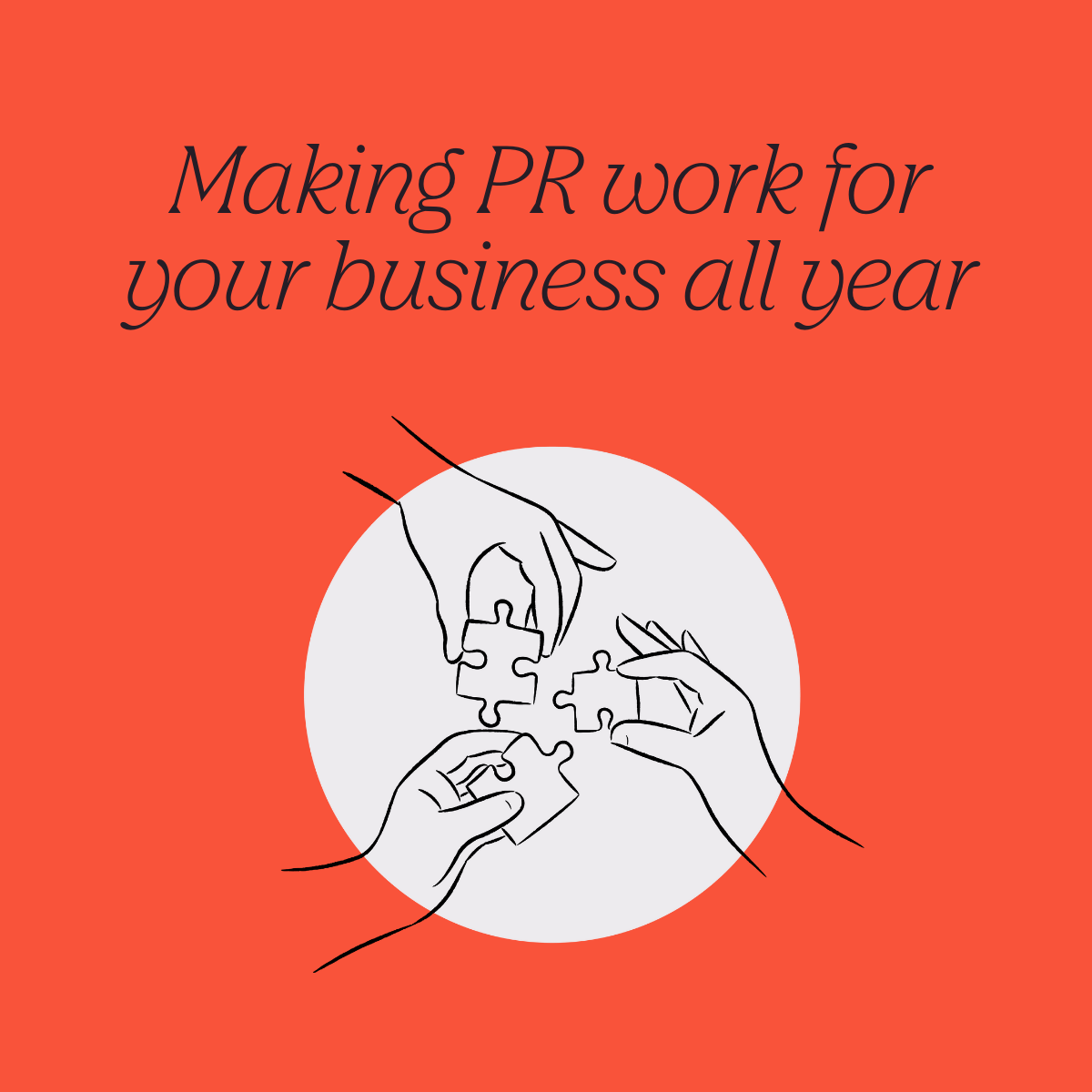Making PR work for your business all year
September feels like a fresh start. With summer behind us and autumn on the way, it’s the perfect time to take stock and plan for the months ahead. Whether you manage PR in-house or work with an external partner, a strong plan keeps your communications working hard for your business goals, while staying flexible enough to react to unexpected opportunities.

Reflect before you move forward
Before you set new objectives, reflect on the year so far. Which campaigns really landed? Where did you see the best return? What could have gone better?
We review our plans every year – with data where we can – so we know what to repeat and what to change. This keeps PR activity grounded in reality and not guesswork.
Set your strategic direction
Your PR strategy should always support your business plan. If you’re moving into a new sector, focusing on recruitment, or building your profile as a thought leader, start with clear goals.
Revisit your audience and make sure your key messages still align. This keeps your PR purposeful, not reactive, and means everyone is pulling in the same direction.
Create your content calendar
An editorial content calendar gives your year structure. Map out:
- Industry events
- Topics and awareness days relevant to your sector
- Evergreen content that reinforces your expertise all year round
- Thought leadership – opinion pieces, research, or insights into emerging trends
Some dates are fixed, others are set externally – like regulatory changes, major reports, or elections. Building these into your plan early gives you time to prepare and won’t leave you on the backfoot.
Also, identify your internal champions – the rising stars, the subject experts, the leaders-in-waiting. Decide who will speak for your business and make sure they get the training or briefing they need.
Leave room for reactive activity too. News moves fast, and being able to pivot at short notice is key.
Set budgets and allow flexibility
Allocate your budget across planned activity, but keep some in reserve for unplanned opportunities – an award entry, a sponsorship, or anything that needs a bit more strategic input from an external partner.
They say “plans are nothing, planning is everything”! Priorities change, new issues crop up, and opportunities come out of nowhere. Even if the plan doesn’t work out, you’ve planned for it. That might mean researching new media targets, preparing journalists for an embargoed announcement, or managing a crisis. Think now about the risks and opportunities in your sector, and agree in advance how you’ll respond.
Measure and adapt
Set clear KPIs from the start and review them regularly, so you can build on what’s working and adjust what’s not before small gaps become big problems.
PR planning is more than filling a calendar. Done well, it aligns communications with your business goals, keeps you visible, and helps you handle whatever the year throws at you.
The right mix of structure and flexibility will let you deliver planned campaigns while staying ready for opportunities and challenges. We work with clients on their PR plans every year, sometimes creating and delivering them, other times by developing the strategy for in-house teams to run with. Because we have access to a wide range of editorial resources and media contacts, we can help with making sure your plan is grounded in real opportunities.
If you’d like to create a PR plan that works for your business, get in touch.
FAQs:
1. Why is PR planning important for your business?
Effective PR planning ensures your communications support business goals, keeps your brand visible, and helps you respond effectively to opportunities throughout the year.
2. What is a PR content calendar?
A PR content calendar details key events and content steers to plan ahead. This includes mapping industry events, awareness days, evergreen content, and thought leadership opportunities. A plan should also build in flexibility for reactive and timely news and content generation aligned with your business goals and key audience messages.
3. How should PR strategy align with business goals?
Your PR strategy should be purposeful and reflect your wider business priorities, such as entering new markets, recruitment drives, or building the profile of your business thought leadership.
4. How to allocate and budget for PR?
Budgets vary depending on your goals and resources. Allocate most to planned campaigns, but always keep some aside for reactive opportunities like award entries, sponsorships, or crisis management.
5. How to measure the success of PR campaigns?
Setting and tracking KPIs is an important part of the process when measuring success. This can include media coverage quality, reach, engagement, lead generation, web traffic and more depending on your goals. Regular reviews of KPIs help to build on what’s working and adjust what isn’t.